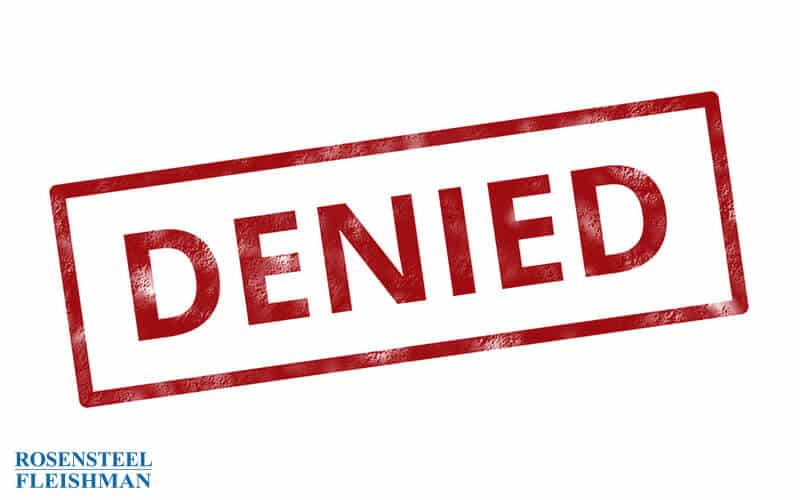After an accident involving a large commercial truck, most people are left feeling overwhelmed, confused, and unsure of what to do next. These crashes are often far more serious than typical car accidents because of the sheer size and weight of trucks. When a driver is fatigued behind the wheel, the risks increase dramatically. Sleep-deprived […]

Common Defenses to Personal Injury Claims
Personal injury claims that seek compensation for damages fill courtrooms in the United States every day. A plaintiff argues that a defendant caused them to suffer either physically, emotionally, monetarily, or otherwise, and they believe they should receive some finical compensation for the damage they suffered. When a plaintiff brings forth a suit, it would be in their best legal interest to anticipate what the defendant might assert as a defense. It is unlikely a defendant will fully concede to the damages being their entire fault, so a plaintiff would be best intentioned to be prepared to combat some of the more common defenses.
All personal injury cases have a unique set of circumstances, but common suits typically involve in an accident in some fashion or another. One of the most common arguments a defendant might bring forth is that the plaintiff was fault or shared some blame in the accident or injuries. Clearly, it must be proven that the plaintiff shares in responsibility, but if it can be proven, then the damages a plaintiff may be able to recover will be reduced or out of the question entirely. Under an argument of shared fault or total fault of the plaintiff, the defendant might argue that the plaintiff assumed risk in participating in the activity that leads to their injuries.
When a defendant argues that the injured plaintiff assumed the risk of getting hurt, they are saying that the plaintiff willfully participated in an activity that they knew was dangerous. The assumption of risk argument is most often raised when there is an injury sustained during a contact sport like football or lacrosse. Assumption of risk can also be applied to extreme recreational sports such as paintball, or even applied to spectator injuries. For example, a spectator at a baseball game is expected to be alert to the surroundings and assumes some risk when sitting close to the field of play. If a foul ball strikes a spectator, it might be argued that said spectator assumed the risk of being hit by a ball because they sat so close to the game.
A critical aspect of a successful assumption of risk defense is that the damage that occurred must have happened must be closely related to the risk that is inherent to the activity. For example, if a plaintiff is injured in a pickup football game, they will probably not have a successful personal injury case because there is always a risk that they will be injured while playing. However, if the injured party is playing on a football field and gets hit because the goalposts fall over, they would have a personal injury claim. Assumed risk covers any close associated with that activity that any reasonable person could expect to encounter.
Assumption of risk is a common defense but is not applicable in all personal injury cases such as car accidents. As previously mentioned, it is one of the most common arguments for a plaintiff to argue that there was a shared fault between the two parties. When this assertion happens, most states follow a comparative negligence rule. Comparative negligence means that when damages are calculated, they are done so according to each party's degree of responsibility in the accident. For instance, if a plaintiff is involved in a car accident and is found to be 10% at fault while the defending driver would be found 90% liable. The blame can be reached based on police reports, testimony, evidence uncovered by insurance, but either way, if there is shared responsibility, it will be reflected when damages are recovered. In this instance, where one driver has 10% of the blame, they would only be able to recover 90% of the damages based on their responsibility. The vast majority of states do follow a comparative negligence rule, but North Carolina is not one of those states.
North Carolina follows a contributory negligence rule, which can significantly affect the plaintiff's ability to recover damages. While the comparative negligence laws reduce a plaintiff's compensation when they share in the blame for the accident, the concept of contributory negligence is not as forgiving. Plaintiffs who share any portion of the blame in any type of personal injury matter will most likely be barred from receiving any compensation. Contributory negligence means that if a plaintiff shares even 5% of the blame, they will not be able to recover because of their role in the injury.
Contributory negligence can seem harsh, but it is one of the more commonly used defenses, especially in North Carolina. The defendant only has to prove that they were not solely responsible for the damages, and they could be absolved of any liability. For example, if someone speeding while intoxicated injures a plaintiff, but the plaintiff were texting, although the defendant shares the majority of the blame, the plaintiff would not be able to collect on any damages.
If a plaintiff does not want to go to trial, but they still feel they deserve some compensation, they could try and settle out of court. It is possible that by working with an attorney or working through the at-fault individual's insurance company. It is often more time effective and assures the plaintiff of receiving some proportion of compensation if they settle out of court.
If a settlement cannot be reached, then the only option will be to pursue a lawsuit. When a plaintiff goes to court, they and their attorneys must be prepared for any defense that a defendant will have. If a plaintiff is looking to recover any damages for lost wages, medical bills, pain and suffering or any other recovery in North Carolina they must share in none of the blame for the injuries that occurred. If a plaintiff does not share any of the blame, they will have to prove it. If the plaintiff is successful at proving that the defendant was responsible for all damages, they will have to calculate the damages. The plaintiff will collect items such as medical bills, invoices for damage to property, and testimony that can show what type of suffering they endured as a result of the injuries.
If you or a loved one was injured in an accident please contact us. You will speak with one of our personal injury lawyers who can best answer your questions and go over your options. There is no fee for the initial consultation.
Additional Personal Injury Articles
After a motorcycle accident, it’s normal to feel overwhelmed. There’s the shock of what happened, the physical pain, and the sudden wave of questions about what comes next. Between dealing with insurance companies and trying to heal, it's easy to feel like you’re being pulled in too many directions. Many people aren’t sure what their […]
Bicycle crashes can be frightening on their own, but when they lead to spinal injuries, the stress can multiply fast. Between dealing with medical appointments, physical discomfort, and a growing stack of paperwork, the last thing anyone wants is to feel uncertain about what to do next. Spinal injuries can range from painful and temporary […]
Losing a spouse is devastating, and when their death was caused by someone else's actions, the grief is often accompanied by confusion, anger, and a sense of injustice. For many in Charlotte who have relied on a spouse not just emotionally, but financially and practically, the idea of filing a wrongful death claim can feel […]
